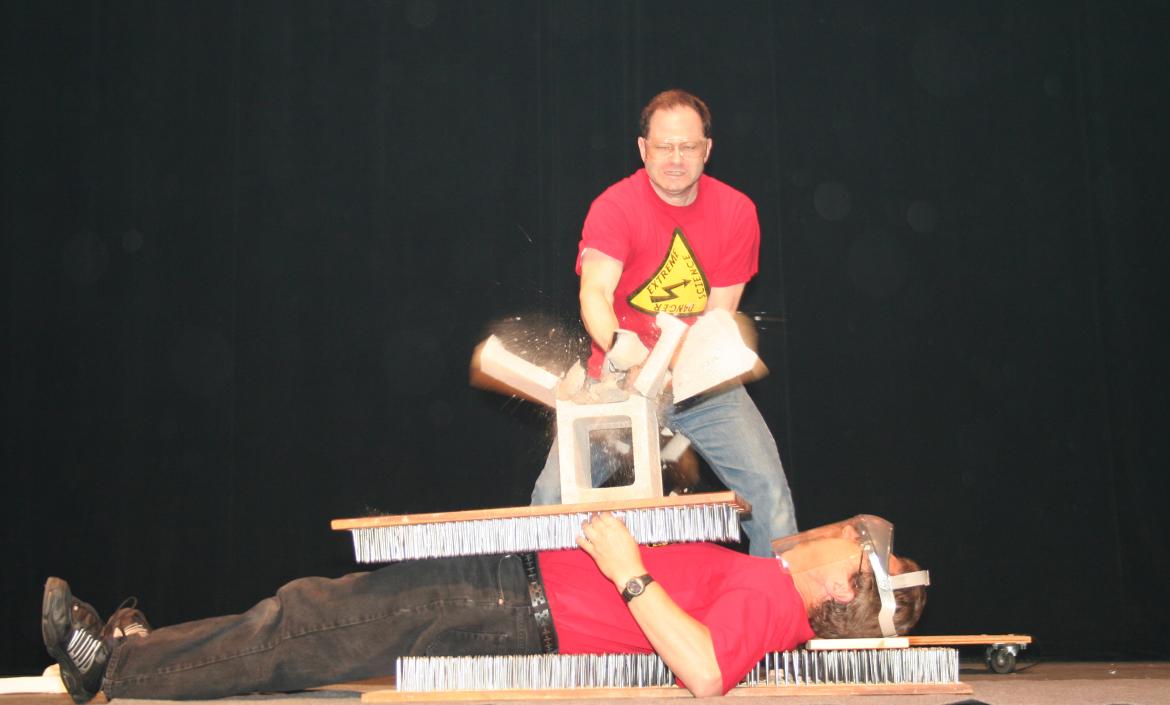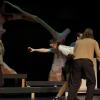
May 7, 2012 - 2:28am
Physics and chemistry faculty are getting their props and concoctions ready for the fourth annual Extreme Science show at Vancouver Island University.
The startling and occasionally loud science demonstrations will entertain close to 1,200 school students in four sold-out shows this year. Tickets are available for the public presentation of explosions, implosions, flying arrows, fire, lightning and illusions at Malaspina Theatre on the Nanaimo campus 7 pm, Thursday, May 17.
Tickets are $10 and are available from Kool&Child, #102-2517 Bowen Rd.
“It’s a challenge each year to come up with new demonstrations on a tight budget but it’s fun creating them and seeing people’s response when we try them out,” says VIU physics professor Ray Penner.
The show is being staged by six faculty from the Physics Department; Greg Arkos, Debbie Hearn, Owen Peer, Jim Slater, Frank LoPinto and Penner along with two faculty from Chemistry; Peter Diamente and Sandy Patrick, as well as VIU student Greg Vandergrift and former VIU student Richard Salmon.
“It’s rewarding for us as a group to get kids excited about science,” says Penner. “And it goes the other way too. The response from the kids certainly keeps us ‘extreme scientists’ excited about putting on the show.”
Extreme Science is a popular spring fundraiser for LED Africa, a charity started by Penner. The organization aims to provide solar-powered lighting systems to rural secondary schools in Malawi, Africa. Penner developed a connection with Malawi when he taught there 20 years ago.
“Many of the rural secondary schools in Malawi have evening study sessions where they use kerosene lighting,” he says. “These sessions are typically sporadic both because of the cost and the limited availability of kerosene. In addition, the smoke from the kerosene lanterns causes health concerns.”
In 2008, Penner and his colleagues from the University of Malawi set up a test system at a school using energy efficient LED lights powered by a solar panel on the roof. The total power required for a 50-student classroom is about 40 watts, which keeps expenses low.
After a positive response from the test school, Penner created LED Africa. Lighting systems were installed in classrooms at three schools in 2009 and six more schools in 2010, with the help of technicians from the University of Malawi. In 2011 LED Africa installed classroom lighting systems at an additional five secondary schools in Malawi bringing the total to 14 schools. The cost to set up a classroom is $1,200, with two classroom systems being installed at each school.
The single solar panel, the battery, and cables which are required for each classroom are purchased from suppliers within Malawi. The battery box, which holds the battery and the controls, as well as the stands for the LED lanterns are built by local Malawian carpenters. The lanterns are all assembled by Malawians.
“The key for me is that the system is built by Malawians and maintained by Malawians,” says Penner. “The annual cost of running this lighting is less than what the schools pay for kerosene and therefore the schools can cover all the future maintenance costs. It’s a long-term system.”
In addition to money raised through ticket sales, local companies support the Extreme Science show and LED Africa by each contributing enough funds to install one classroom lighting system in Malawi.
This year’s Extreme Science show is sponsored by Herold Engineering Ltd., Anderson Civil Consultants, Fairwinds Golf Club and VIU.
For questions about Extreme Science email:
For more information on the Malawi project, visit:
Tags: In the Community






